Cosmic inflation: BICEP2 and Planck to share data
- Published
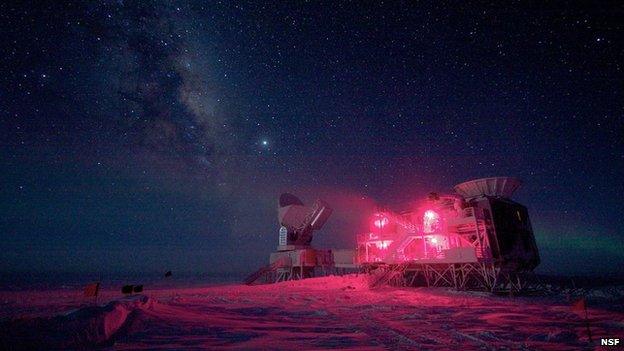
The BICEP2 telescope studied a small patch of sky in detail above the South Pole
Scientists on rival projects looking for evidence that the early Universe underwent a super-expansion are in discussion about working together.
The negotiations between the US-led BICEP2 group, external and Europe's Planck Collaboration, external are at an early stage.
BICEP2 announced in March that its South Pole telescope had found good evidence for "cosmic inflation".
But to be sure, it needs the best data on factors that confound its research - data that Planck has been compiling.
If the two teams come to an arrangement, it is more likely they will hammer down the uncertainties.
"We're still discussing the details but the idea is to exchange data between the two teams and eventually come out with a joint paper," Dr Jan Tauber, the project scientist on the European Space Agency's Planck satellite, told BBC News.
This paper, hopefully, would be published towards the end of the year, he added.
Foreground dust
The question of whether the BICEP2 team did, or did not, identify a signal on the sky for inflation has gripped the science world for weeks.
The group used an extremely sensitive detector in its Antarctic telescope to study light coming to Earth from the very edge of the observable Universe - the famous Cosmic Microwave Background (CMB) radiation.
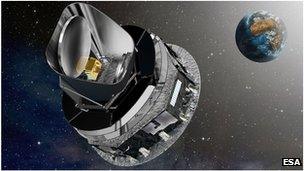
The Planck satellite was launched in 2009 to map the Cosmic Microwave Background
BICEP2 looked for swirls in the polarisation of the light.
This pattern in the CMB's directional quality is a fundamental prediction of inflation - the idea that there was an ultra-rapid expansion of space just fractions of a second after the Big Bang.
The twists, known as B-modes, are an imprint of the waves of gravitational energy that would have accompanied the violent growth spurt.
But this primordial signal - if it exists - is expected to be extremely delicate, and a number of independent scientists have expressed doubts about the American team's finding. And the BICEP2 researchers themselves lowered their confidence in the detection when they formally published their work in a Physical Review Letters paper, external last month.
At issue is the role played by foreground dust in our galaxy.
Nearby spinning grains can produce an identical polarisation pattern, and this effect must be removed to get an unambiguous view of the primordial, background signal.
The BICEP2 team used every piece of dust information it could source on the part of the sky it was observing above Antarctica.
What it lacked, however, was access to the dust data being compiled by the Planck space telescope, which has mapped the microwave sky at many more frequencies than BICEP2.
This allows it to more easily characterise the dust and discern its confounding effects.
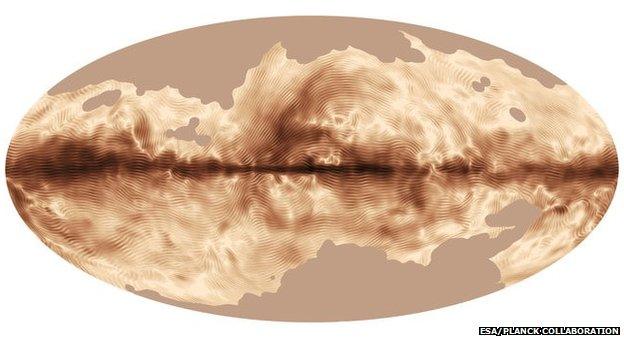
Planck released dust information close to the galactic plane in May
In May, the Planck Collaboration published dust polarisation information gathered close to the galaxy's centre - where the grains are most abundant.
In a few weeks' time, the Planck team plans to release further information detailing galactic dust in high latitude regions, including the narrow patch of the southern sky examined by BICEP2.
And then, in late October, the Planck Collaboration is expected to say something about whether it can detect primordial B-modes.
As Dr Tauber explained, Planck's approach to the problem is a different one to BICEP2's.
"Planck's constraints on primordial B-modes will come from looking at the whole sky with relatively low sensitivity as compared to BICEP2," he said.
"But because we can look at the whole sky, it makes up for some of that [lower sensitivity] at least. On the other hand, we have to deal with the foregrounds - we can't ignore them at all.
"At the same time, we will work together with BICEP2 so that we can contribute our data to improve the overall assessment of foregrounds and the Cosmic Microwave Background.
"We hope to start working with them very soon, and if all goes well then we can maybe publish in the same timeframe as our main result [at the end of October]."
Jonathan.Amos-INTERNET@bbc.co.uk and follow me on Twitter: @BBCAmos, external
- Published20 June 2014
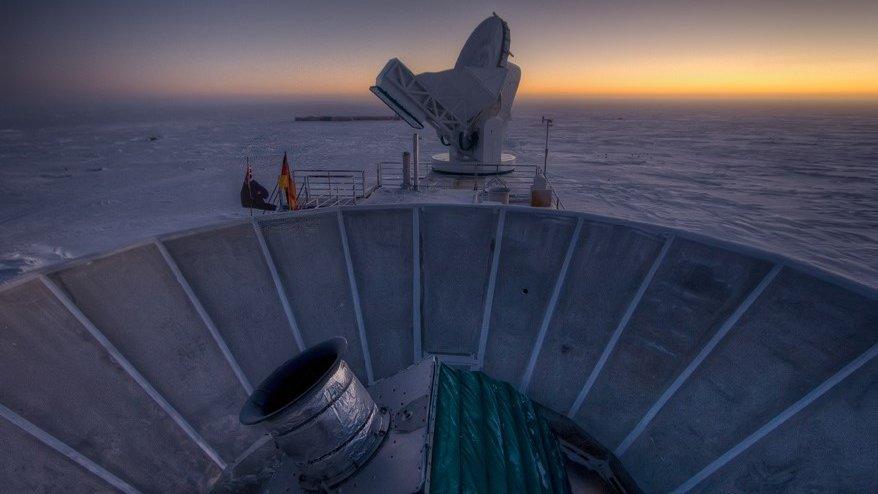
- Published17 March 2014

- Published17 March 2014
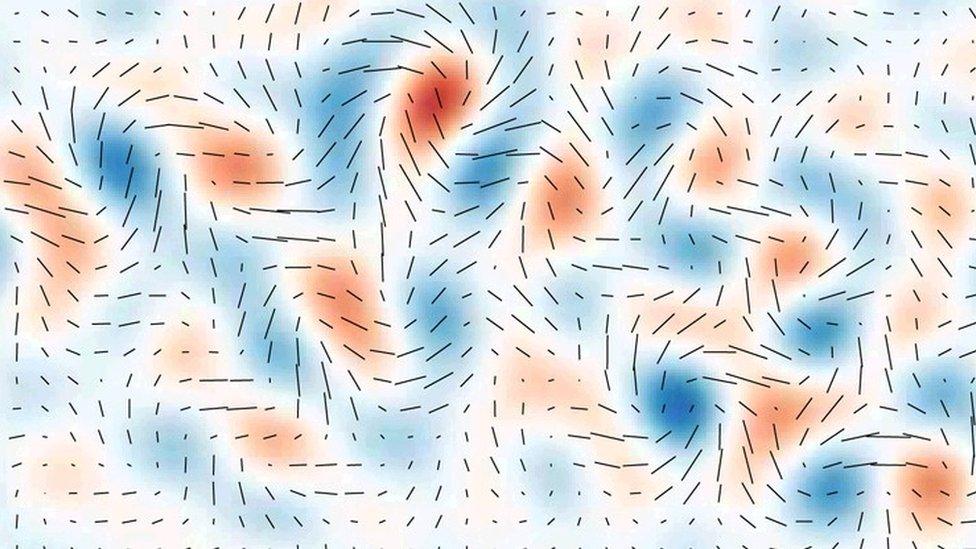
- Published27 March 2013
- Published18 March 2013